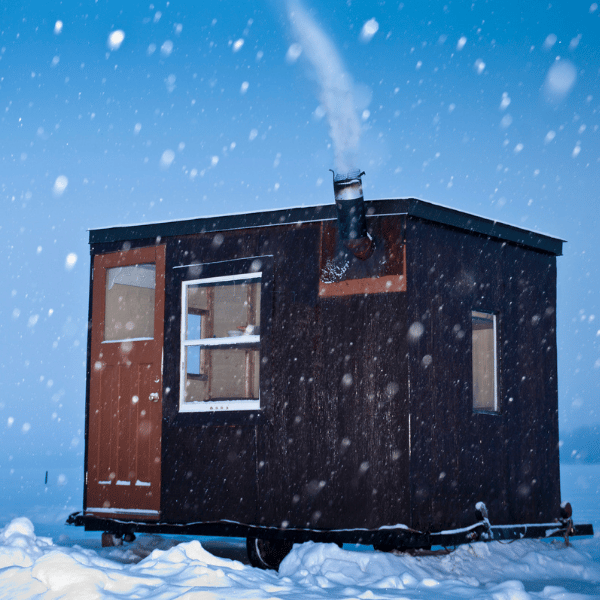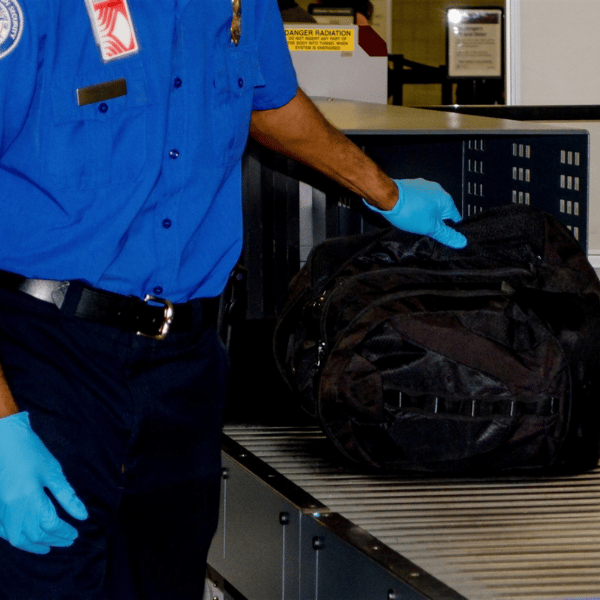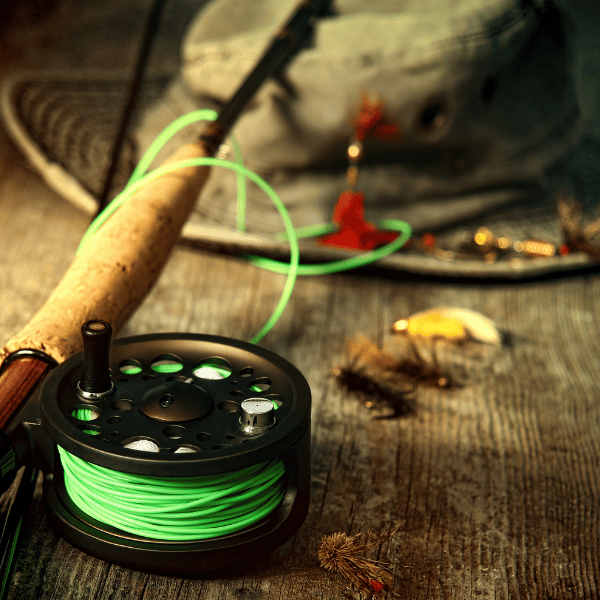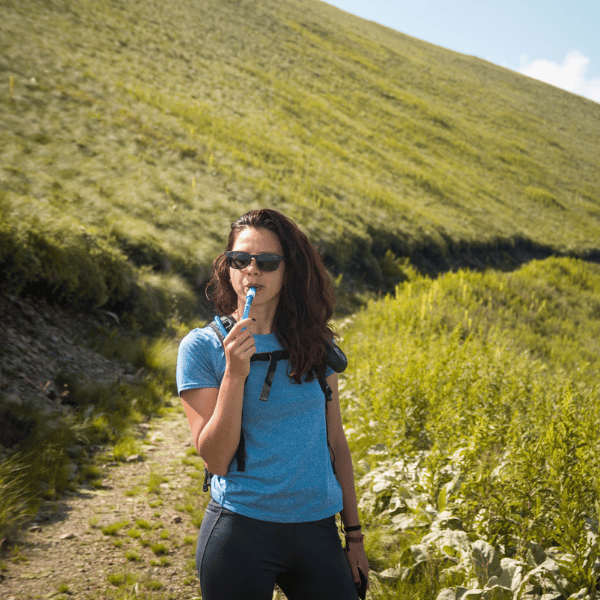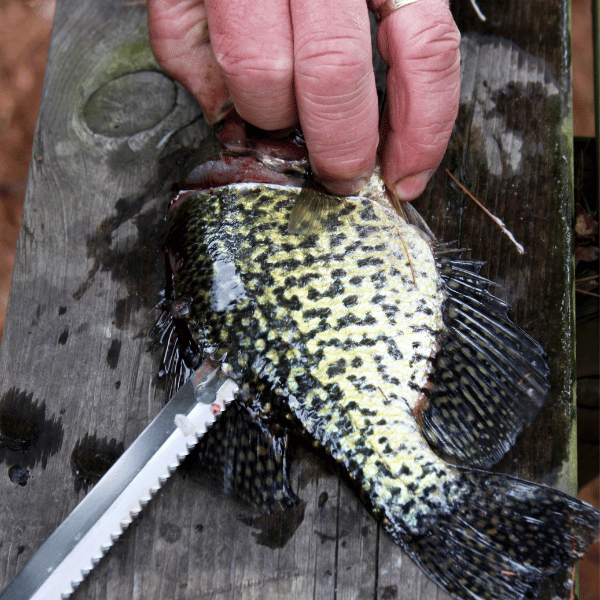Fly Fishing Hook Size Guide
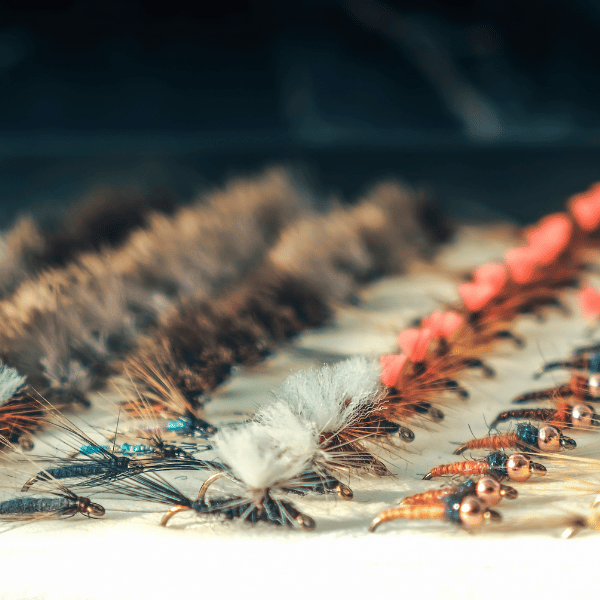
This is a complete fly fishing hook size guide that includes fly hook sizes for bass, trout, carp, redfish, and salmon.
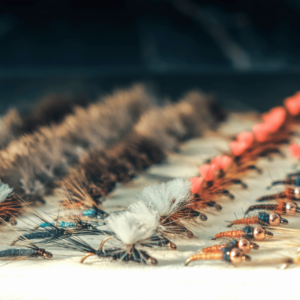
Having the right hook size can make a big difference for each type of fish you are trying to catch when fly fishing. The hook needs to be big enough to properly hook the fish and keep it on the line, but also small enough to attract the fish and fit inside its mouth.
In this fly fishing hook size guide, we go through the hook sizes for bass, trout, carp, redfish, and salmon so you can be prepared the next time you cast a fly to catch each of these specific fish.
Contents
How Do I Know What Size Fly Hook to Use?
The size of the hook for each type of fish depends on the fishing conditions and what kind of fish you want to attract. In general, for smaller fish, you want smaller hooks. Bigger hooks for larger, more aggressive fish. The hook should be able to blend into the overall fly.
Different size flies will attract different fish, and you should always choose your flies to be most appealing to the fish you’re trying to catch.
You also want to keep in mind the kind of fish you’re going after and how big you want it to be. Choose a too sizeable hook, and you could be sitting around all day without a catch.
Bass Fly Fishing Hook Size
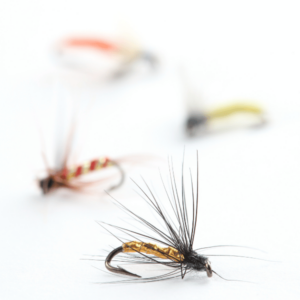
You probably know the two most popular bass types for fishing in the United States: the smallmouth and largemouth bass. But what you probably don’t know is that you can use the same size fishhook for both.
In general, so long as you’ve got the right sizes, which type of bass you catch will depend on sheer luck. If you want a smallmouth, you might end up catching largemouth and vice-versa. Just keep casting and keep your hopes up.
As for those sizes- you’ll want to use something between 4 and 4/0. We would recommend 4, 2, 1, 1/0, 2/0, 3/0, or 4/0. Keeping in this range will be your safest bet if you’re less experienced. Some fishermen use different sizes for other techniques, but any of these will work for casual fishing.
Deciding what to use within that range is simple. If you’ve got a significantly larger fly on hand, use a bigger hook. For a smaller one, use something smaller. You want your fishhook to catch when you get a bite, but you don’t want the fish to see it coming. Fish are smarter than we give them credit for and can smell a trap a mile away.
Trout Fly Fishing Hook Size
For trout, use hook sizes 8 to 14. Trout are incredibly observant and will sniff out your hook if it’s not well concealed. Since everyone wants to fish for trout, make sure not to eat all of what you catch. We want some of it to be here for our kids, after all.
In general, you want to tend to the smaller end of the scale for trout. Small as possible. If your bait isn’t almost completely covering up your hook, you’ll just end up alerting the trout to your dastardly plan. Your trout-fishing hopes will be dead in the water.
I find I have the most luck with trout in murkier water. On days when the water’s been stirred up, and there’s a fair bit of matter floating around in the soup, I like to go fly-fishing. In these conditions, trout are less likely to sense a fishhook and much more likely to bite.
If you’re not looking to eat what you catch, remember to stay away from barbed hooks—for a trout, biting a little barbless fly-hook is like getting an ear piercing. It’ll go right on about its business after you release it.
Put a bunch of big metal thorns on your hook, and you change things up a little.
Carp Fly Fishing Hook Size
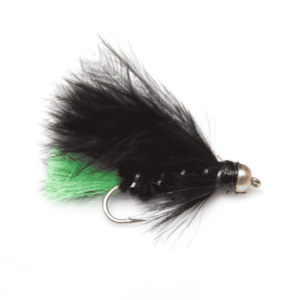
The most common fly fishing hook sizes for carp are between 8 to 10, but with a little finagling, you can get away with a larger range. Just keep in mind our primary considerations- fly size and fish size. After this, you’re golden.
Using bigger, more noticeable flies will help you catch more fish. Think of it this way- would you rather be looking for a needle or a lead pipe in a haystack. Bigger bait will attract more fish, and more fish means more meat, or more pride, if that’s what you’re going for.
Don’t be afraid to go out into the back aisles of your favorite store hunting for better flies if you have to. One hour spent finding a nice, noticeable fly is worth two or three hours fishing with a measly little thing. You’ll thank yourself when you’re revealing in a monster later.
Look for flies with dark colors to improve visibility under the water. This may seem contradictory- dark colors make something stand out more, but it’s really not when you think about it. Darker colors will stick out against the murky water as sun-beams shine through.
I prefer bigger black flies for something the fish can see and will want to chow down on.
Redfish Fly Fishing Hook Size
Here we get a little bit crazy with the hook sizes. Bass had the widest range so far, while trout had the smallest hooks. Redfish are going to have the biggest hooks yet, so bust out those giant grim reapers in your tackle box and get ready to have some fun.
1/0 to 3/0 size hooks are best for Redfish. Using these larger hooks will keep redfish tugging on your line throughout the day, so keep your hands at the ready and don’t lose your grip. I’ve seen some real monsters in my day.
Of course, you don’t know if you can trust me on that. I could just be spinning you a line.
Small sizes will help your bait swim more naturally and keep redfish from noticing your hooks as you fish. I haven’t noticed redfish getting any craftier than trout, so it’s not quite as big of a deal here, but you always want to keep your hook well-concealed just in case.
Again, bigger flies will bring you more attention, so make sure you’re picking out those big bulging horseflies. I know I’m always eyeing the biggest, juiciest pieces of meat over the little shriveled-up things when I’m at a barbecue. Why should fish be any different?
Salmon Fly Fishing Hook Sizes
If you’re living in a place with salmon swimming through its streams, I envy you. On the east coast, I’ve got to go to the store and pay a premium for a juicy, pink cut of salmon. They absolutely pack those things with dye, too.
In general, salmon will be a little bit larger, so you’ll want to err on the side of your larger hooks if you want to catch them. I’d recommend anywhere from 4 all the way up to 4/0 if you’re going to give yourself the best chance. Keep in mind, though, most of fly fishing is trial and error. If one size isn’t working for you, work your way up until you hit something that does.
Nothing beats a good fried or broiled salmon. In my opinion, they’re the tastiest fish in the water. If I could go out fishing for salmon every day, I would. Unfortunately, though, the US is unlikely to build a canal from the Pacific to the Mississippi any time soon.
Fly Fishing Hook Size FAQ
A fly is an artificial lure typically made out of feathers and synthetic materials. They’re made to imitate the kinds of food fish eat in the wild.
In my experience, bigger is better. Unless you’re going for smaller fish, that is. Choose darker flies for better visibility in murky water, and make sure to take time finding your bait.
